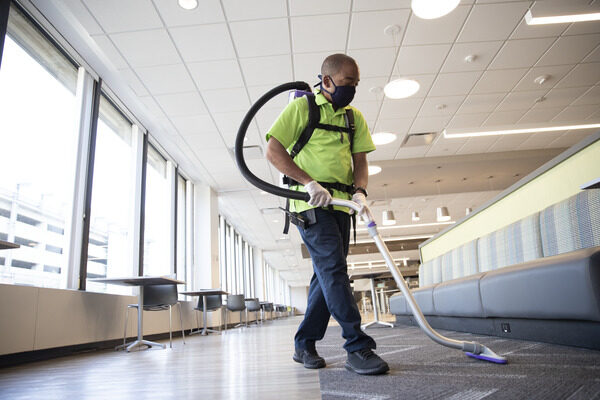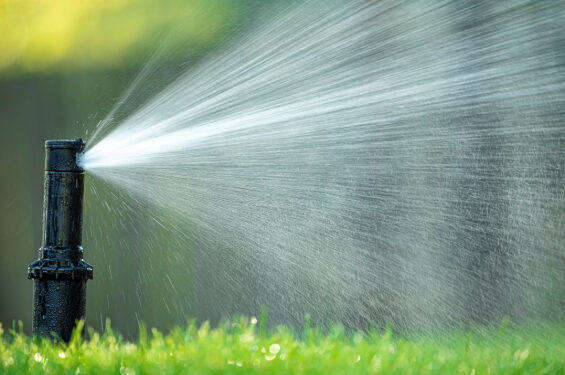
Few home ailments carry the notoriety of black mold. From allegations of cancer-causing potential to lung disease, the darkly colored fungus exists in near mythological infamy among homeowners.
So, are the rumors well-founded? Is black mold dangerous? Well, any home that contains it is unlikely to pass a home inspection, however, this is also true of many molds. Some studies have indicated that black mold can cause a variety of symptoms from aches to memory loss, however, these are unproven. It does seem apparent that people with allergies, respiratory conditions, or other preexisting conditions that weaken the immune system can be susceptible to infection and worsened symptoms, however again, this is true of numerous kinds of mold.1
What is black mold?
There are many kinds of mold that are black, however, the color of a mold alone does not make it more dangerous.2 When most people use the term “black mold”, they are referring to a particular species of mold called Stachybotrys chartarum. Like many molds, it thrives in damp environments, particularly on materials such as wood and drywall.
Most often, its presence in a home indicates that more moisture is present than should be and that you might have a home maintenance issue on your hands. If you notice black mold, or any mold, in your home, you should consider checking for leaks or other forms of water infiltration into your home.
Possible health symptoms of black mold exposure
Black mold’s notoriety is largely based upon the substances it releases called mycotoxins. Symptoms of black mold exposure are a result of inhaling or otherwise ingesting these mycotoxins and can include persistent coughing, sneezing, eye irritation, and other symptoms that are typically synonymous with allergies. More severe black mold symptoms are quite rare. People with allergies or weakened immune systems may experience worsened reactions, although any healthy person who is exposed to a large amount of mold spores for extended periods of time can be susceptible.3
How to identify black mold in your home
What does black mold look like? As previously mentioned, it’s not the only kind of mold with a dark color and preference for damp places. Since any mold is a problem, it’s best to start broad. Start with looking for any sources of water that shouldn’t be there. Water damage spots from leaks are one of the earliest harbingers of mold growth. If mold is already growing, you will typically be able to smell it. If the air anywhere in your home smells of mildew or is otherwise musty or earthy, there is likely mold growing nearby. Of course, the best way to determine the presence of mold is to find visible evidence. Mold often hides behind walls, but dark rings or spots showing through will give it away.
You can also go one step further and have visible mold growth tested to determine if it is Stachybotrys chartarum. Since other molds have a similar appearance, a DIY or professional test is really the only surefire example of how to identify black mold. Various kinds of mold can pose health risks though, so testing any mold you find in your home is always best. The larger the infestation, the greater chance the mold has of causing health problems. Test and treat mold outbreaks as soon as possible to mitigate the risks they can pose to you and your family.
So, is black mold dangerous? It’s not the silent killer that rumors often imply, but with the ability to cause a host of minor and occasionally major health problems, not to mention damage to your home, it’s certainly best to consider it a hazard. Make sure your homeowners insurance has you covered and that you’re taking precautions to prevent mold growth. Learn about the different scenarios when homeowners insurance covers mold damage and when it does not.
1https://www.medicalnewstoday.com/articles/323419#_noHeaderPrefixedContent, Accessed July 2021.
2https://www.healthline.com/health/black-mold-exposure, Accessed July 2021
3https://www.medicalnewstoday.com/articles/323419#how-dangerous-is-it, Accessed July 2021.
Disclaimer:
The information included is designed for informational purposes only. It is not legal, tax, financial or any other sort of advice, nor is it a substitute for such advice. The information may not apply to your specific situation. We have tried to make sure the information is accurate, but it could be outdated or even inaccurate in parts. It is the reader’s responsibility to comply with any applicable local, state, or federal regulations. Nationwide Mutual Insurance Company, its affiliates and their employees make no warranties about the information nor guarantee of results, and they assume no liability in connection with the information provided. Nationwide, Nationwide is on your side, and the Nationwide N and Eagle are services marks of Nationwide Mutual Insurance Company. © 2021 Nationwide.



